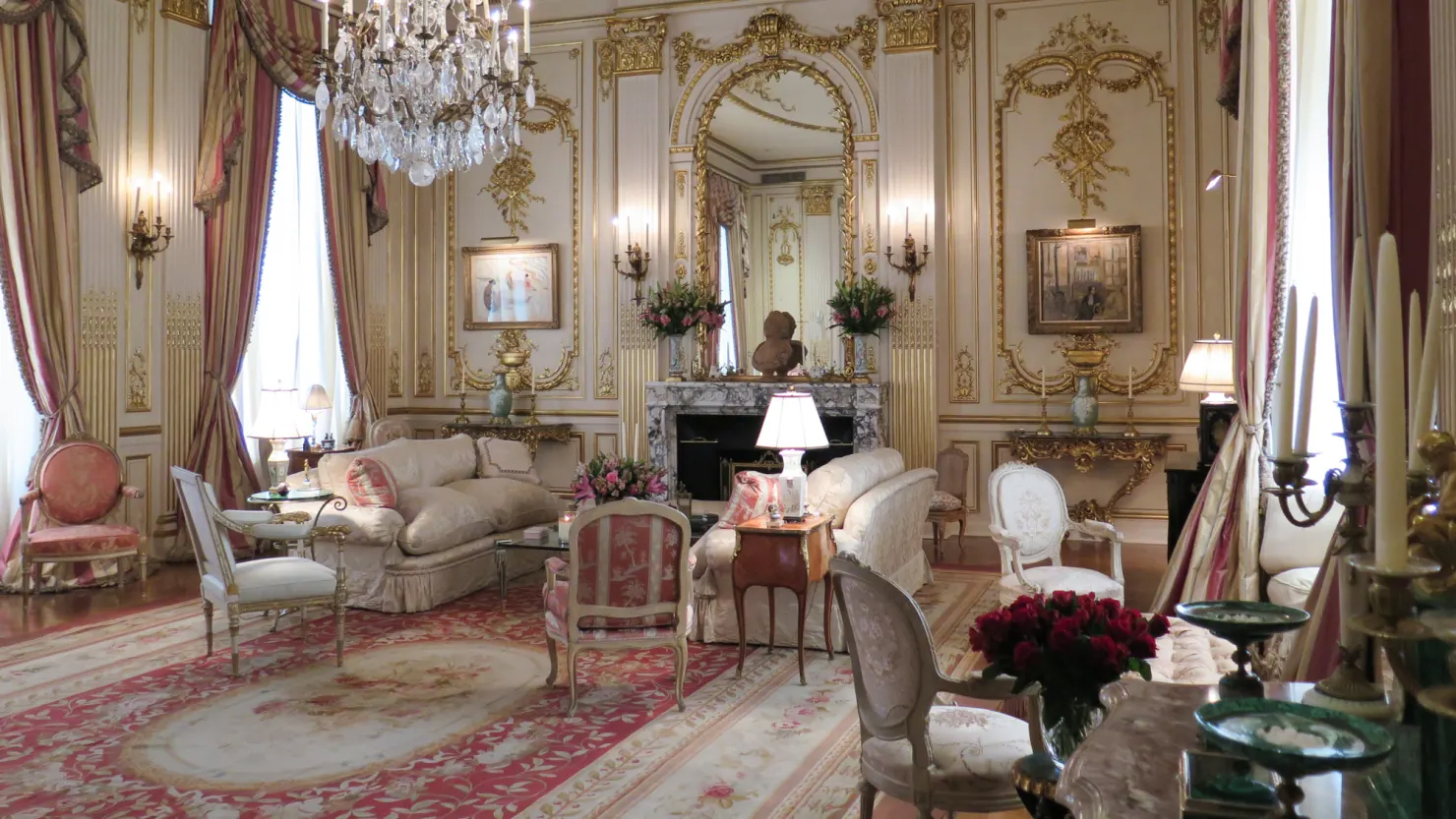This standing Buddha is a classic example of Burmese religious sculpture work from the Mandalay period (1850-1880) with exceptional presence. It would have originally been part of a temple or monastery shrine, likely flanking a larger seated Buddha or placed in a devotional alcove.
Carved from wood and entirely gilded, the figure stands in a poised, elegant posture with both arms extended downward in the varada mudra—a gesture of compassion and charity. The facial expression is serene and introspective, with gently downcast eyes, high-arched brows, and a subtle smile reflecting inner tranquility. The robe is richly ornamented with intricate low-relief detailing and inlaid with colored glass mosaics, especially along the hem, cuffs, and over the shoulder sash, a hallmark of Mandalay-style craftsmanship. The figure stands barefoot atop a red lotus pedestal (symbolizing purity) raised on a black base that was added later for display.
Dimensions:
W: 28″
D: 15″
H: 75″











